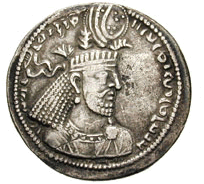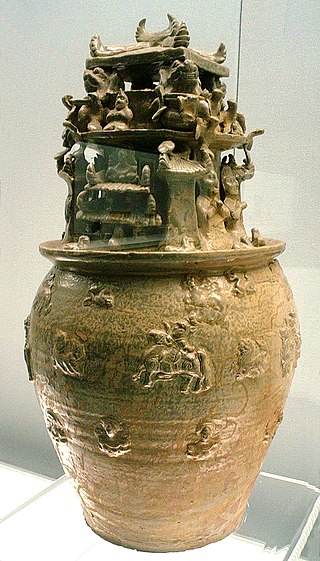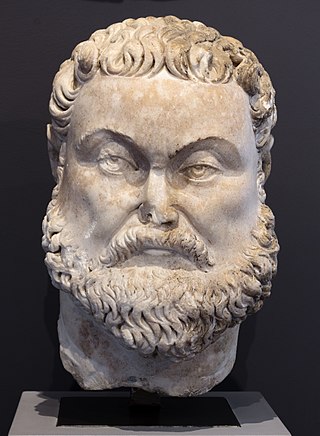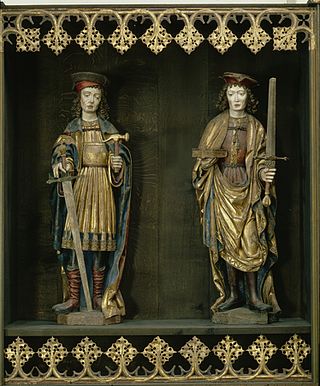The 300s decade ran from January 1, 300, to December 31, 309.
The 310s decade ran from January 1, 310, to December 31, 319.
The 270s decade ran from January 1, 270, to December 31, 279.
Year 305 (CCCV) was a common year starting on Monday of the Julian calendar. At the time, it was known as the Year of the Consulship of Constantius and Valerius. The denomination 305 for this year has been used since the early medieval period, when the Anno Domini calendar era became the prevalent method in Europe for naming years.
The 290s decade ran from January 1, 290, to December 31, 299.
The 280's decade ran from January 1, 280, to December 31, 289.

Year 299 (CCXCIX) was a common year starting on Sunday of the Julian calendar. In the Roman Empire, it was known as the Year of the Consulship of Diocletian and Maximian. The denomination 299 for this year has been used since the early medieval period, when the Anno Domini calendar era became the prevalent method in Europe for naming years.

Year 295 (CCXCV) was a common year starting on Tuesday of the Julian calendar, the 295th Year of the Common Era (CE) and Anno Domini (AD) designations, the 295th year of the 1st millennium, the 95th year and last 6 years of the 3rd century, and the 6th year of the 290s decade. At the time, it was known as the Year of the Consulship of Tuscus and Anullinus. The denomination 295 for this year has been used since the early medieval period, when the Anno Domini calendar era became the prevalent method in Europe for naming years.

Year 293 (CCXCIII) was a common year starting on Sunday of the Julian calendar. In the Roman Empire, it was known as the Year of the Consulship of Diocletian and Maximian. The denomination 293 for this year has been used since the early medieval period, when the Anno Domini calendar era became the prevalent method in Europe for naming years.

Year 291 (CCXCI) was a common year starting on Thursday of the Julian calendar. At the time, it was known as the Year of the Consulship of Tiberianus and Dio. The denomination 291 for this year has been used since the early medieval period, when the Anno Domini calendar era became the prevalent method in Europe for naming years.
Year 289 (CCLXXXIX) was a common year starting on Tuesday of the Julian calendar. At the time, it was known as the Year of the Consulship of Bassus and Quintianus. The denomination 289 for this year has been used since the early medieval period, when the Anno Domini calendar era became the prevalent method in Europe for naming years.
Year 288 (CCLXXXVIII) was a leap year starting on Sunday of the Julian calendar. In the Roman Empire, it was known as the Year of the Consulship of Maximian and Ianuarianus. The denomination 288 for this year has been used since the early medieval period, when the Anno Domini calendar era became the prevalent method in Europe for naming years.
Year 287 (CCLXXXVII) was a common year starting on Saturday of the Julian calendar. In the Roman Empire, it was known as the Year of the Consulship of Diocletian and Maximian. The denomination 287 for this year has been used since the early medieval period, when the Anno Domini calendar era became the prevalent method in Europe for naming years.
Year 277 (CCLXXVII) was a common year starting on Monday of the Julian calendar. At the time, it was known as the Year of the Consulship of Probus and Paulinus. The denomination 277 for this year has been used since the early medieval period, when the Anno Domini calendar era became the prevalent method in Europe for naming years.

Year 308 (CCCVIII) was a leap year starting on Thursday of the Julian calendar. It was known in the Roman Empire as the Year of the Consulship of Diocletian and (Galerius) Maximianus. The denomination 308 for this year has been used since the early medieval period, when the Anno Domini calendar era became the prevalent method in Europe for naming years.

Year 307 (CCCVII) was a common year starting on Wednesday of the Julian calendar. At the time, it was known as the Year of the Consulship of Severus and Maximinus. The denomination 307 for this year has been used since the early medieval period, when the Anno Domini calendar era became the prevalent method in Europe for naming years.

Flavius Valerius Constantius "Chlorus", also called Constantius I, was Roman emperor from 305 to 306. He was one of the four original members of the Tetrarchy established by Diocletian, first serving as caesar from 293 to 305 and then ruling as augustus until his death. Constantius was also father of Constantine the Great, the first Christian emperor of Rome. The nickname Chlorus was first popularized by Byzantine-era historians and not used during the emperor's lifetime. After his re-conquering of Roman Britain, he was given the title 'Redditor Lucis Aeternae', meaning 'The Restorer of Eternal Light'.

Maximian, nicknamed Herculius, was Roman emperor from 286 to 305. He was Caesar from 285 to 286, then Augustus from 286 to 305. He shared the latter title with his co-emperor and superior, Diocletian, whose political brain complemented Maximian's military brawn. Maximian established his residence at Trier but spent most of his time on campaign. In late 285, he suppressed rebels in Gaul known as the Bagaudae. From 285 to 288, he fought against Germanic tribes along the Rhine frontier. Together with Diocletian, he launched a scorched earth campaign deep into Alamannic territory in 288, refortifying the frontier.

Saints Crispin and Crispinian are the Christian patron saints of cobblers, curriers, tanners, and leather workers. They were beheaded during the reign of Diocletian; the date of their execution is given as 25 October 285 or 286.
Rictius Varus was a Vicarius in Roman Gaul at the end of the 3rd century, around the time of the Diocletianic Persecution. The Roman Martyrology contains many references to the prefect Rixius Varus, who is said to have persecuted hundreds of Christians. In Christian hagiography he later repented and became a Christian martyr himself, and is regarded a Saint in the Eastern Orthodox and Roman Catholic Churches, with his feast day on July 6.









